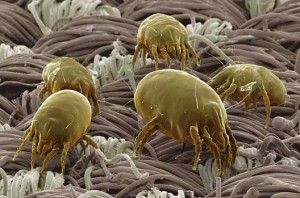Common problems with existing air conditioners result from faulty installation, poor service procedures, and inadequate maintenance. Improper installation of your air conditioner can result in leaky ducts and low airflow. Many times, the refrigerant charge (the amount of refrigerant in the system) does not match the manufacturer’s specifications. If proper refrigerant charging is not performed during installation, the performance and efficiency of the unit is impaired. Service technicians often fail to find refrigerant charging problems or even worsen existing problems by adding refrigerant to a system that is already full.
Air conditioner manufacturers generally make rugged, high quality products. However, an air conditioner’s filters, coils, and fins require regular maintenance for the unit to function effectively and efficiently throughout its years of service. Neglecting necessary maintenance ensures a steady decline in air conditioning performance while energy use steadily increases. Inadequate maintenance to components will cause the air conditioner will not work properly, and the compressor or fans are likely to fail prematurely. If your air conditioner fails, it is usually for one of the common reasons listed below:
Refrigerant Leaks: If your air conditioner is low on refrigerant, either it was undercharged at installation, or it leaks. If it leaks, simply adding refrigerant is not a solution. A trained technician should fix any leak, test the repair, and then charge the system with the correct amount of refrigerant. Remember that the performance and efficiency of your air conditioner is greatest when the refrigerant charge exactly matches the manufacturer’s specification, and is neither undercharged nor overcharged.
Electric Control Failure: The compressor and fan controls can wear out, especially when the air conditioner turns on and off frequently, as is common when a system is oversized. Because corrosion of wire and terminals is also a problem in many systems, electrical connections and contacts should be checked during a professional service call.
Air Conditioner Filters: The most important maintenance task that will ensure the efficiency of your air conditioner is to routinely replace or clean its filters. Clogged, dirty filters block normal airflow and reduce a system’s efficiency significantly. With normal airflow obstructed, air that bypasses the filter may carry dirt directly into the evaporator coil and impair the coil’s heat-absorbing capacity. Filters are located somewhere along the return duct’s length. Common filter locations are in walls, ceilings, furnaces, or in the air conditioner itself. Some types of filters are reusable; others must be replaced. They are available in a variety of types and efficiencies. Clean or replace your air conditioning system’s filter or filters every month or two during the cooling season.
Filters may need more frequent attention if the air conditioner is in constant use, is subjected to dusty conditions, or you have fur-bearing pets in the house. Regular maintenance of air conditioner coils, cooling fins, and fans will lead to a longer, more efficient service life.
Air Conditioner Coils: The air conditioner’s evaporator coil and condenser coil collect dirt over their months and years of service. A clean filter prevents the evaporator coil from soiling quickly. In time, however, the evaporator coil will still collect dirt. This dirt reduces air flow and insulates the coil which reduces its ability to absorb heat. Therefore, your evaporator coil should be checked every year and cleaned as necessary.
Outdoor condenser coils can also become very dirty if the outdoor environment is dusty or if there is foliage nearby. You can easily see the condenser coil and notice if dirt is collecting on its fins. You should minimize dirt and debris near the condenser unit. Your dryer vents, falling leaves, and lawn mower are all potential sources of dirt and debris. Cleaning the area around the coil, removing any debris, and trimming foliage back at least 2 feet (0.6 meters) allow for adequate air flow around the condenser.
Coil Fins: The aluminum fins on evaporator and condenser coils are easily bent and can block air flow through the coil. Air conditioning wholesalers sell a tool called a “fin comb” that will comb these fins back into nearly original condition.
Sealing and Insulating Air Ducts: Insulating air ducts prevents the loss of hot or cool air before it reaches individual rooms. An enormous waste of energy occurs when cooled air escapes from supply ducts or when hot attic air leaks into return ducts. Recent studies indicate that 10 percent to 30 percent of the conditioned air in an average central air conditioning system escapes from the ducts. For central air conditioning to be efficient, ducts must be airtight. Hiring a competent professional service technician to detect and correct duct leaks is a good investment, since leaky ducts may be difficult to find without experience and test equipment. Ducts must be sealed with duct “mastic.”
The old standby of duct tape is ineffective for sealing ducts. Obstructions can impair the efficiency of a duct system almost as much as leaks. You should be careful not to obstruct the flow of air from supply or return registers with furniture, drapes, or tightly fitted interior doors. Dirty filters and clogged evaporator coils can also be major obstructions to air flow. The large temperature difference between attics and ducts makes heat conduction through ducts almost as big a problem as air leakage and obstructions. Ducts in attics should be insulated heavily in addition to being made airtight.

